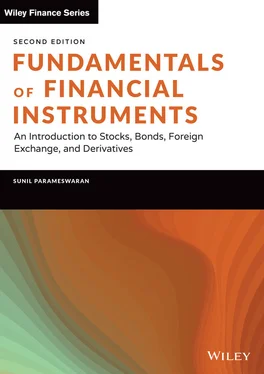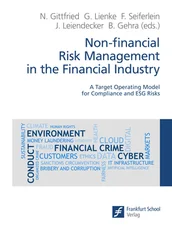Opinion:Finance can be made incredibly complicated in the form of exotic securities and sophisticated mathematical models. But the core issue in an economy is that some entities have more than what they want, whereas others want more than what they have. The former transfer their surplus wealth to the latter, which issues securities in return. The securities themselves, and the businesses that deploy the resources, are vulnerable to different types of risks. Consequently, risk mitigation instruments, such as financial derivatives – which, incidentally, can also be used to speculate on risk – come into existence. But if we sift through the theories and the formulas, the underlying core transaction is a transfer from a Surplus Budget Unit (SBU) to a Deficit Budget Unit (DBU).
“A financial asset is a claim against the income or wealth of a business firm, a household, or a government agency, which is represented usually by a certificate, a receipt, a computer record file, or another legal document, and is usually created by or is related to the lending of money.” 1
A financial claim is born in the following fashion. Whenever funds are transferred from a surplus budget unit (SBU) to a deficit budget unit (DBU), the DBU will issue a financial claim. It signifies that the party transferring the funds has a claim against the party accepting the funds. The transfer of funds from the lender may either be in the form of a loan to the borrower, or may constitute the assumption of an ownership stake in the venture of the borrower. In the case of loans, the claim constitutes a promise to pay the interest either at maturity or at periodic intervals and to repay the principal at maturity. Such claims are referred to as debt securities, or as fixed income securities. In the case of fund transfers characterized by the assumption of ownership stakes, the claims are known as equity shares. Unlike debt securities, which represent an obligation on the part of the borrower, equity shares represent a right to the profits of the issuing firm during its operation, if there is a profit, and to such assets that may remain after fully paying all creditors in the event of liquidation of the venture. It should be remembered that claims are always issued by the party that is raising funds and held by parties providing the funds.
To the issuer of the claim, the claim is a liability, for it signifies that it owes money to another party. To the lender, or the holder of the claim, it is an asset, for it signifies that the holder owns an item of value. The total of financial claims issued must be equal to the total financial assets held by investors, and every liability incurred by a party must be an asset for another investor.
Why do investors acquire financial assets? Financial assets are essentially sought after for three reasons.
They serve as a store of value or purchasing power.
They promise future returns to their owners.
They are fungible, in the sense that they can be easily converted into other assets and vice versa.
In addition to debt securities and equity shares, we will also focus on the following assets:
Money
Preferred shares
Foreign exchange
Derivatives
Mortgages
Money is a financial asset because all forms of money in use today are claims against some institution. Contrary to popular perception, money is not just the coins and currency notes handled by economic agents. For instance, one of the largest components of money supply today is the checking account balances held by depositors with commercial banks. From the banks' standpoint, these accounts obviously represent a debt obligation. Banks have the capacity to both expand and contract the money supply in an economy. Currency notes and coins also represent a debt obligation of the central bank of the issuing country, like the Federal Reserve in the United States. In today's electronic age, newer forms of money have emerged, such as credit, debit, and smart cards.
Money performs a wide variety of important functions, thus it is sought after. In a modern economy, all financial assets are valued in terms of money and all flows of funds between lenders and borrowers occur via the medium of money.
MONEY AS A UNIT OF ACCOUNT OR A STANDARD OF VALUE
In the modern economy, the value of every good and service is denominated in terms of the unit of currency. Without money, the price of every good or service would have to be expressed in terms of every other good or service. The availability of money leads to a tremendous reduction in the amount of price-related information that is required to be processed.
Take the case of a 100-good economy. In the absence of money, we would require 100C 2or 4,950 prices. 2 However, if a currency were to be available, we would require only 100 prices, a saving of almost 98% in terms of the required amount of information. Think of the saving for a modern economy, which has billions of goods.
MONEY AS A MEDIUM OF EXCHANGE
Money is usually the only financial asset that every business, household, and government department will accept as payment in return for goods and services.
Why is it that everyone is willing to readily accept money as compensation? It is primarily because they can always use it whenever needed to acquire any goods and services that they may desire. Thus, due to the existence of money, it is possible to clearly separate, in time, the act of sale of goods and services from any subsequent acquisition of goods and services. In the absence of money, we would have to exchange goods and services for other goods and services, a phenomenon which is termed as barter or countertrade.
MONEY AS A STORE OF VALUE
Money also serves as a store of value, or as a reserve of future purchasing power. However, just because an item is a store of value, it need not necessarily mean that it is a good store of value. In the case of money, inflation (the erosion of its purchasing power) is a virtually constant feature.
For instance, take the case of a good that costs $2 per unit. Thus, if an investor has $10 with him, he can acquire five units. However, if he were to keep the money with him for a year, he may find that the price in the following year is $2.50 per unit and hence he can acquire only four units. This is a manifestation of inflation, which may be considered to be a silent killer of wealth.
MONEY IS PERFECTLY LIQUID
What is a liquid asset? An asset is defined to be liquid if it can be quickly converted into cash with little or no loss of value. Why is liquidity important? In the absence of liquidity, market participants will be unable to transact quickly at prices that are close to the true or fair value of the asset. Buyers and sellers will need to expend considerable time and effort to identify each other, and very often will have to induce a transaction by offering a large premium or discount. If a market is highly liquid at a point in time, it means that plenty of buyers and sellers are available. In an illiquid or thin market, a large purchase or sale transaction is likely to have a major impact on prices. A large purchase transaction will send prices shooting up, whereas a large sale transaction will depress prices substantially. Liquid markets therefore have a lot of depth, as characterized by relatively minimal impact on prices. Liquid assets are characterized by three attributes:
Price stability
Ready marketability
Reversibility
In these respects, money is obviously the most liquid of all assets because it need not be converted into another form to exploit its purchasing power.
However, liquid assets come with an attached price tag. The more liquid the asset in which an investment is made, the lower the interest rate or rate of return from it. Thus, there is a cost attached to liquidity in the form of the interest forgone due to the inability to invest in an asset paying a higher rate of return. Such interest that is forgone is lost forever, and consequently cash is the most perishable of all economic assets.
Читать дальше












